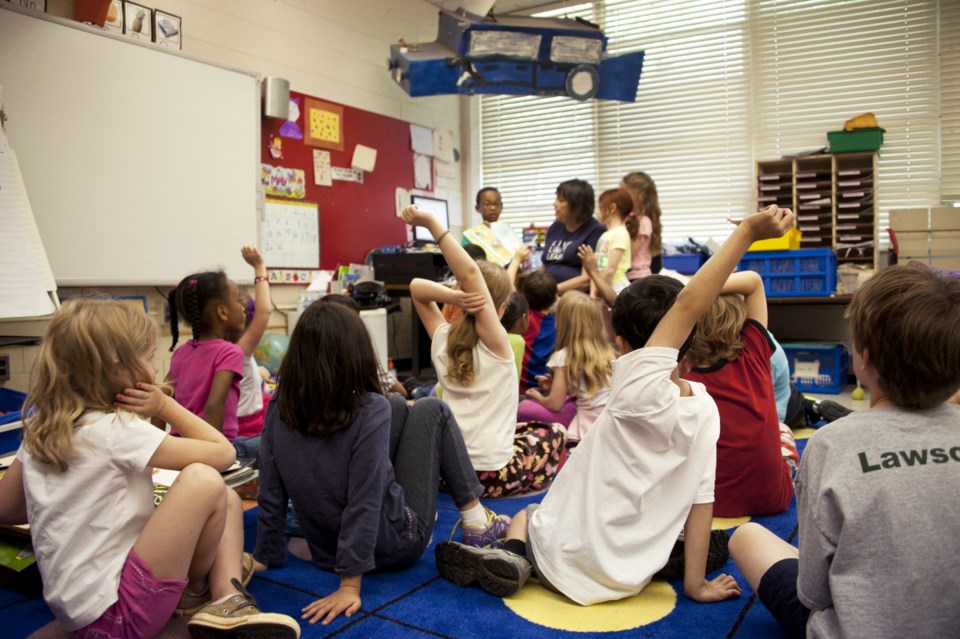Getting Indigenous content implemented in Ontario schools curriculum has had a rough go.
In 2016 Kathleen Wynne’s Liberal government committed to updating the curriculum by having curriculum writing sessions with Indigenous educators. The Ministry of Education of Premier Doug Ford’s Conservative government in 2018 cancelled the curriculum revisions and writing sessions.
Twenty years later finally the curriculum has been revised and implemented in 2019 and the Ontario government put $3.25 million into doing it.
Both the Upper Grand District School Board and the Wellington Catholic District School Board have implemented the curriculum from Grade 4 and above.
A new mandatory social studies curriculum is being developed for Grades 1 through 3 and will focus on the residential school system and Indigenous relationship to the land. The curriculum will be implemented September 2023.
WCDSB has already started incorporating Indigenous content for Grades 1 through 3. Guest speakers come in to teach students about kinship, family, and relationships with nature.
Cathy Doucette, WCDSB support teacher responsibilities with First Nation, Métis and Inuit education said learning about Indigenous history goes beyond Orange Shirt Day.
“The history is super important to learn about but it’s important that educators spend an equal amount of time celebrating excellence. We are working with our Indigenous community local partners to bring in that contemporary piece,” said Doucette.
Indigenous content throughout the curriculum at each grade level is built upon the premise that when students move into a new grade they already have foundational knowledge around topics like residential schools or Inuit way of life and culture.
At WCDSB, the Grade 11 level now has a mandatory course called understanding contemporary First Nations, Métis and Inuit voices. It replaces the traditional English course. In this course students will read Indigenous texts, Indigenous authors, and listen to podcasts hosted by Indigenous people.
“We would like to see the integration of Indigenous perspectives and content and ways of knowing, using a cross curricular approach,” said Doucette.
She gave an example when the school board worked with the Grand River Métis Council where they came and did Métis finger weaving with Grade 4 classes and made math connections with their finger weaving creations.
Unlike UGDSB, WCDSB does not have a policy on Indigenous education but is working on it.
The UGDSB approved policy 519 on Indigenous education in 2021. It protects Indigenous rights within public education and to make sure teachers have the right information to teach their classes.
Indigenous students in the UGDSB came up with the idea to have a conference where they could bring a couple of their non-Indigenous friends to learn about how to be an ally to Indigenous people.
“I come from a background of teaching history in high school and so there was lots of content in my Grade 10 history class, before the new curriculum, but that was only because I’m Anishinaabe,” said Colinda Clyne, UGDSB curriculum educator for First Nations, Métis, and Inuit education.
She said she couldn't teach a Canadian history class and not include other stories other than the the colonial narrative of Canada is a great country.
“There is not a requirement from the Ministry of Education for someone to have knowledge, any courses at all and they can teach Indigenous studies courses,” said Clyne.
She said she would like to see a change and have it be a requirement for teachers to take courses and learn about Indigenous topics before imparting their knowledge to students.
“I want my grandchildren to see themselves reflected in the curriculum,” she said.
Clyne also wants there to be less focus on the trauma of Indigenous people and more emphasis on contemporary topics like land back, language reclamation and revitalization.
She said her long-term vision is for Indigenous content to be embedded throughout the curriculum in every course.
